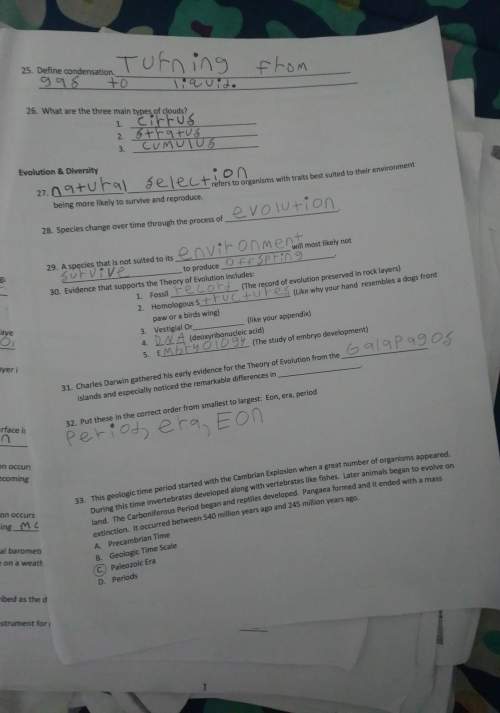
Physics, 27.08.2020 02:01 sofiisabella10
You serve a volleyball with a mass of 2 kg. The ball leaves your hand with a speed of 30 m/s. What is the KE of the ball? find the product

Answers: 1


Other questions on the subject: Physics

Physics, 21.06.2019 22:30, djs1671
Laboratory experiments, observational field studies, and model-building are all examples of different forms of scientific investigations. in what way do laboratory experiments primarily differ from other forms of scientific investigations? a. a laboratory experiment is the only accepted form of investigation within the scientific community. b. studies about how things behave in nature or studies involving very large objects are best answered through laboratory experiments. c. laboratory experiments involve the identification and control of variables. d. data can only be generated through laboratory experiments, not other forms of investigation.
Answers: 3

Physics, 22.06.2019 07:20, hardwick744
If 2 moles of co_2 at 2l and 500k are expanded reversibly to 20l, more work can be obtained from an adiabatic process than from an isothermal process. is the above statement true or false?
Answers: 3

Physics, 22.06.2019 19:50, justhereforanswers13
An air-filled capacitor is formed from two long conducting cylindrical shells that are coaxial and have radii of 26 mm and 103 mm. the electric potential of the inner conductor with respect to the outer conductor is - 700 v (k = 1/4πε 0 = 8.99 × 109 n · m2/c2) the energy stored in a 1.0-m length of this capacitor is closest to
Answers: 1

Physics, 22.06.2019 22:30, gaby4567
Atennis player used a tennis racket to hit a tennis ball with a mass of 0.25 kg with a force of 5.25 newtons. how does the force the tennis racket exerted on the tennis ball compare with the force the tennis ball exerted on the tennis racket? a. the force of the tennis racket on the tennis ball is equal in magnitude and opposite in direction to the force the tennis ball exerted on the tennis racket. b. the force of the tennis racket on the tennis ball is equal in magnitude and in the same direction as the force the tennis ball exerted on the tennis racket. c. the force of the tennis racket on the tennis ball is less in magnitude and in the same direction as the force the tennis ball exerted on the tennis racket. d. the force of the tennis racket on the tennis ball is greater in magnitude and opposite in direction as the force the tennis ball exerted on the tennis racket.
Answers: 1
You know the right answer?
You serve a volleyball with a mass of 2 kg. The ball leaves your hand with a speed of 30 m/s. What i...
Questions in other subjects:


English, 03.12.2019 18:31

Mathematics, 03.12.2019 18:31

Mathematics, 03.12.2019 18:31


Business, 03.12.2019 18:31


History, 03.12.2019 18:31

Chemistry, 03.12.2019 18:31

History, 03.12.2019 18:31




